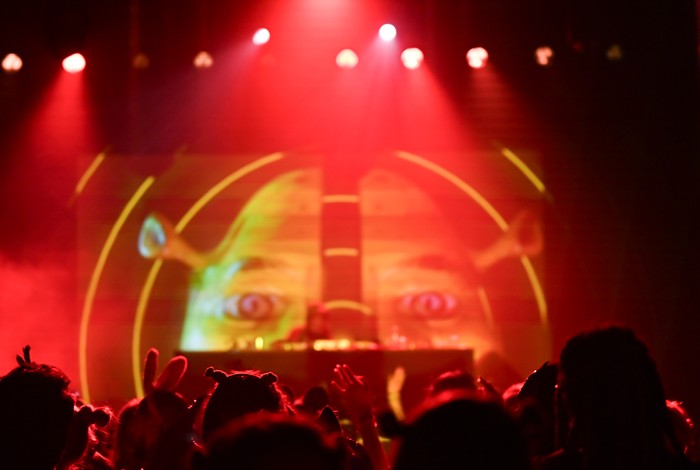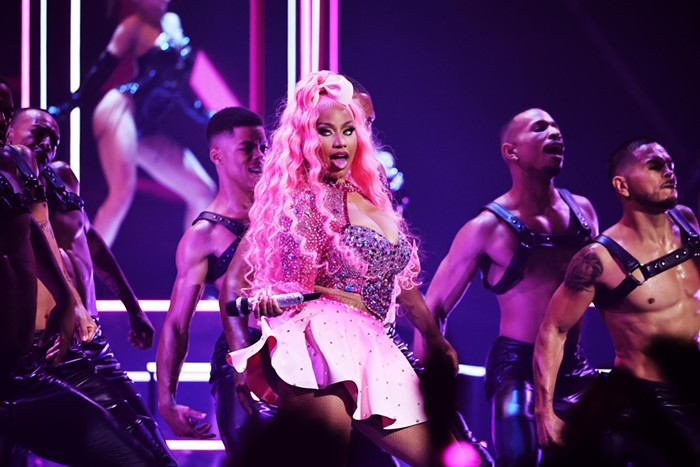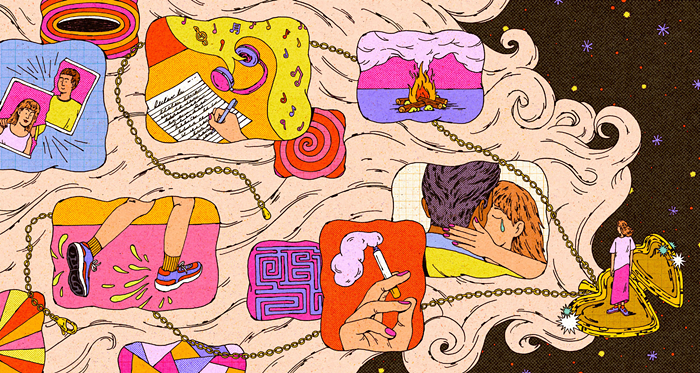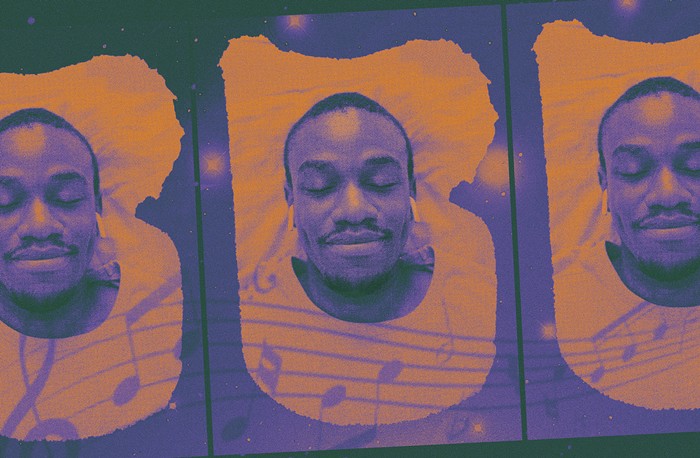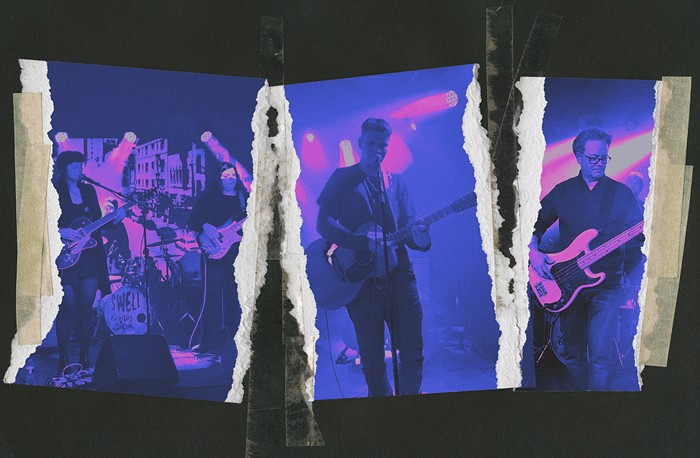To casual observers, Jeff Lynne may forever be the curly-haired guy who somehow finagled his way into the Traveling Wilburys, alongside “genuine” legends like George Harrison, Bob Dylan, Roy Orbison, and Tom Petty. But you and I know better—Lynne was every bit the equal of those guys, and he’s got the back catalog to prove it.
That catalog is getting a long-overdue spotlight with the current tour by Jeff Lynne’s ELO, an updated edition of Lynne’s old band Electric Light Orchestra. During their initial run, ELO added cellos, violins, and choirs to the standard rock-group format and reached an almost ludicrous amount of success in the 1970s and early ’80s. Much like the jukebox spaceship on all those old ELO album covers, Jeff Lynne’s ELO will deliver those hits when they roll through Tacoma on June 28—the first time a Lynne-fronted version of ELO has toured North America since 1981.
The sonic ingenuity and pop smarts that Lynne exhibited in ELO were with him since day one, when he was the guitarist and songwriter for the Idle Race. That Birmingham, England, group released a pair of marvelous albums and a handful of singles to little notice in the late ’60s, including Lynne’s first released composition, the 1967 psychedelic masterpiece “Imposters of Life’s Magazine,” which displayed his aptitude for complex-but-catchy melodies. The song also used unorthodox production tricks, like the chirpy fanfare that was the result of a riff recorded at one speed, then played back twice as fast. Lynne had fallen in love with the idea of the overdub early on, making home recordings with a stereo reel-to-reel deck that allowed him to bounce sounds from one channel to the other while continuously adding new tracks. It was a technique that would serve him well in the future.
In 1970, Lynne was recruited by the groundbreaking band the Move, joining songwriter/multi-instrumentalist Roy Wood and drummer Bev Bevan for the albums Looking On and Message from the Country. Lynne was the perfect catalyst for the group’s increasing ambitions, and the trio soon decided to transition to another project to explore their interest in classical music instrumentation within a pop format—the Electric Light Orchestra.
That first, self-titled Electric Light Orchestra album is a strange, prickly affair, with angrily growling cellos, Wood’s pinched bassoons and oboes, and a precarious balance between heavy rock and baroque chamber music. Beneath it all are Wood and Lynne’s indelible knack for pop hooks, but shortly after the album’s release, Wood departed to start a glam-rock band, Wizzard, leaving Lynne and Bevan to carry on as Electric Light Orchestra.
Now the band’s sole songwriter, Lynne began to follow his pop inclinations, sleeved by his biggest influences: the Beatles’ psychedelic period and the operatic sound of Roy Orbison. ELO 2 was a somewhat tentative step forward, with the gorgeous, epic “Kuiama” offset by a drudging, overstuffed cover of Chuck Berry’s “Roll Over Beethoven.” But by the time of 1973’s On the Third Day, Lynne and Bevan had figured out their modus operandi and solidified the ELO lineup, which now included keyboardist Richard Tandy, the only original ELO member other than Lynne who’s involved in this current tour.
“Showdown,” a single released at that time, is perhaps ELO’s first perfect slice of pop alchemy, reworking the melody from “I Heard It Through the Grapevine” into a sparkling, string-augmented strut with a bluesy vocal from Lynne, a weeping, George Harrison-esque guitar solo, and a funky clavinet underpinning it all. The band had also grown into its own as a live entity, with new technology allowing the string instruments to be mic’ed properly for the first time.
The band grew more focused, delivering their best work with 1974’s Eldorado and 1976’s excellent A New World Record, each full of intoxicatingly sweeping, widescreen songs that simultaneously triumphed as addictive radio smashes. A double album was perhaps inevitable, and 1977’s overextended Out of the Blue is like a box of bonbons—each song’s a perfectly tasty morsel, but it’s a bit too much to digest in one sitting.
ELO successfully straddled the rock/pop divide for years, but they began to be viewed with rockist suspicion for their prolonged success on the hit parade. To make matters worse, video footage of a 1978 concert inadvertently revealed their performance to be augmented by backing tracks, a scandal that seems laughable today. ELO’s participation in Xanadu—the 1980 Olivia Newton-John disco roller-skating fantasy—sealed their reputation as lightweights among haughty rock snobs, although they continued to sell records until their 1986 breakup.
Lynne then embarked on a second career as a super-producer, even manning the boards for the Beatles reunion in the mid-’90s. It’s taken some years for the cognoscenti to give Lynne’s tenure with ELO its proper due, but songs like “Telephone Line” and “Mr. Blue Sky” are now recognized as unassailable pop classics. Much like their contemporaries, the once-derided pop geniuses of ABBA, Lynne and ELO are finally getting the credit they richly deserve.
And that ELO sound is still unmistakable, having never been successfully imitated even after all these years. The band’s first American top 10 hit was the appropriately titled “Can’t Get It Out of My Head,” a sumptuous piano ballad augmented by rococo strings, a heavenly choir, and appealingly primitive synthesizers. It sounds like a half-remembered dream, or the theme song from a classic Hollywood movie, or a transmission beamed from a galaxy far away. It sounds like all those things at once. It’s the sound of Electric Light Orchestra, and, more specifically, the unconventional, enduring genius of Jeff Lynne. Can’t get it out of my head, indeed. ![]()

